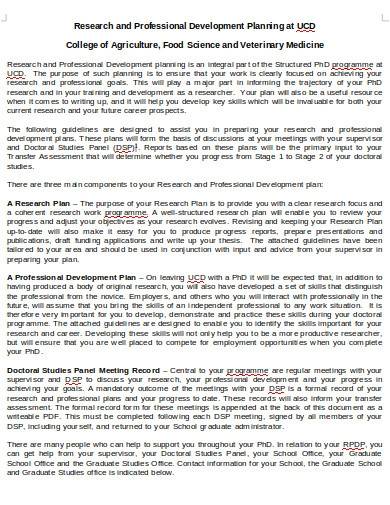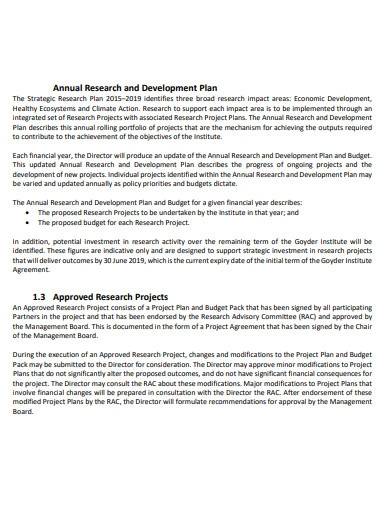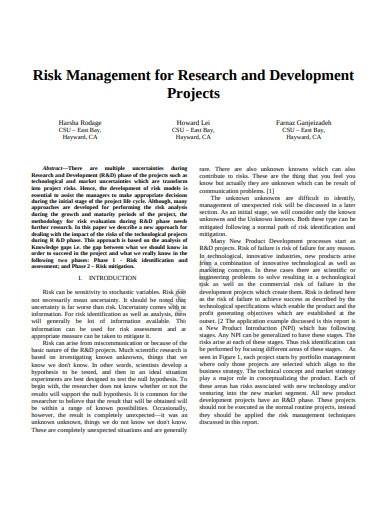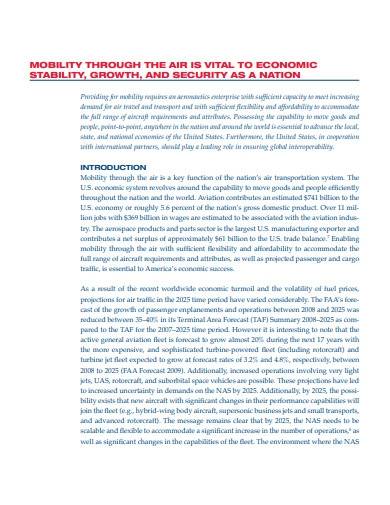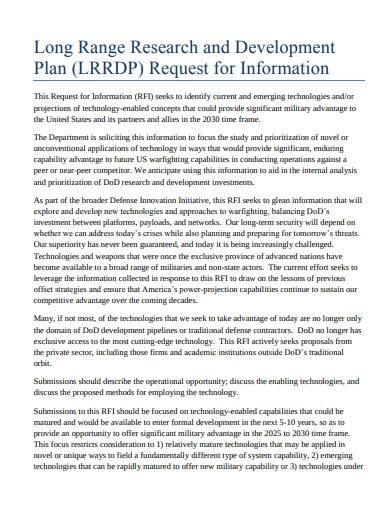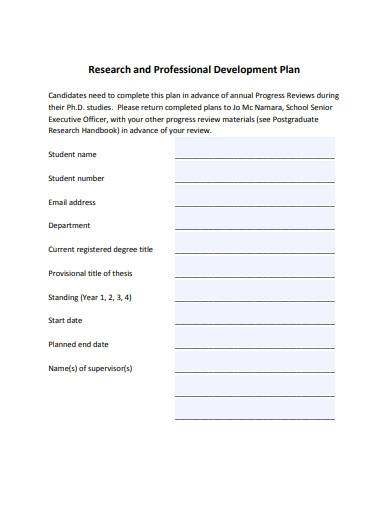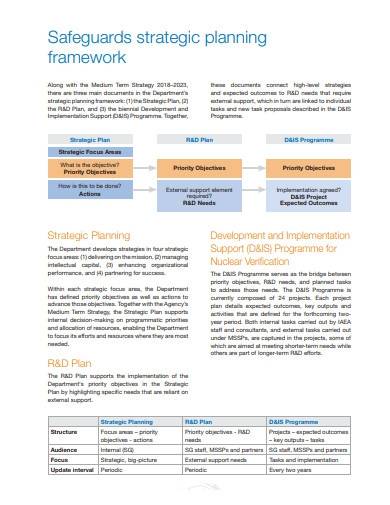The US government engaged in research and development (R&D) plan to win WW II. If it wasn’t for that, the nation won’t be as liberated as it is today. The reason was to issue required military weapon systems to help the nation lead the war. According to the National Center of Biotechnology (NCBI), the nation’s federally-supported science and engineering enterprise started after WW II under Roosevelt’s administration, and it continued until the 1990s. The impact of R&D in the US will be felt even in the near future. Find out more about R&D plans and how it helps a nation with this article.
FREE 10+ Research and Development Plan Samples & Templates
1. Research and Development Plan Template
2. Research and Professional Development Plan
3. Agricultural Research & Development Plan
4. Annual Research and Development Plan
5. Sample Research and Development Plan
6. Research and Development Project Plan
7. Aeronautics Research and Development Plan
8. Long-Range Research and Development Plan
9. Research & Professional Development Plan
10. Defence Research and Development Plan
11. Research and Development Plan Framework
What Is a Plan?
A plan is a generic process that will kick-off every endeavor. At its core, a plan is a written or drawn method that aims to do or achieve something. Usually, a simple plan involves a process—series, steps, or stages—arranged to achieve your goals. Making a plan is divided into two types: formal and informal. Jotting down ideas on a blank paper is already making a plan, at least the most basic components of it.
While an informal plan is commonly the most used by individuals in all pursuits, a formal plan is more methodological in approach. Its structure is the most applicable for projects, diplomacy, careers, academic, economic development, sports, business, research, and more. Thus, describing a plan depends on its breadth, timeframe, and specifications. It is also important to take note that plans could be dependent on another plan. There is a close relationship between them, especially in working for short-term and long-term goals.
Three Types of Detailed Plans
1. Operational Plan
An operational plan is common for departments, workgroups, and individuals because of its precise and measurable goals. More often than not, managers use an operational plan to accomplish his or her team and stand-alone responsibilities. Also, an operational plan takes part in creating a tactical plan, and it is labeled as a single-use plan or an ongoing plan.
2. Tactical Plan
A tactical plan is more focused on sub-units in a division. Unlike an operational that covers bigger groups, a tactical plan works for lower-level concerns. The core components of this plan are strategies to activate a process so that it will achieve its goal. You can point out the comparison of an operational plan and tactical plan on their timeframes and scopes. A tactical plan is responsible for a narrow and short-term goal.
3. Contingency Plan
A contingency plan is the most intelligent plan. Successful organizations rely on resiliency, and that can be achieved through a contingency plan. Managers will always keep all the doors open for opportunities that may or may not approach the company. But with a contingency plan, they can identify alternatives, whether the original plan works or not. Also, a contingency plan is the best option for changing circumstances.
Research and Development Plan: How Is It Important?
The research and development industry provides research papers as an elaborated essay. These papers rely on existing content to analyze an idea or establish an argument. Since researching involves extensive data-gathering procedures on top of the writing process, a research plan is crucial to make sure all goals are accomplished. The research plan will be particular with the different sources for the research—academic publications, journal entries, primary references, textbooks, encyclopedia, etc. And with a research plan, you can limit your sources based on their timeframe.
How to Create a Plan for Research and Development
A research process does not begin with a plan. Hence identify the focus of the argument. As a researcher, you have to simplify the scope of the argument by identifying subtopics. If you have a broad subject, it will yield more sources than you expect, which will make it difficult to focus. It is not possible to include all the topics in the research. For more tips in making a research and development plan, continue reading below.
1. Identify End Goals
Start by thinking of your end goals before writing the plan. Ask yourself, “What are expected after the research?” “Why is there a need to push through the research?” “What are the benefits of the research project?” Questions like these will help in identifying your goals. Remember, you can hit two birds with one stone. Thus, your goals are reachable by not only with a single solution. More so, aim for your goals by meeting them in the middle. So, list down actions or steps in accomplishing these goals.
2. Be Specific and Realistic
Setting your goals is just the beginning of your plan. You are not halfway through it. Writing for the content of its contents needs to be specific and realistic—specific and feasible schedules, milestones, and final results. By doing so, you will reduce the stress that comes along with the poorly-planned research project. For example, if you are required to write a roughly 4,000 words research, set yourself a deadline to track your progress. There is no extension so that you can discipline your character.
3. Set Milestones
Your milestones will benchmark every step towards your end goals. It will help you and your team stay motivated by separating the task into smaller portions. With that, you feel as though you have achieved part of your goals, even the project has not yet completed. Also, to keep track of the project’s schedule, set when the milestone starts and finishes. This is an effective strategy to remain on your target date.
4. Breakdown Tasks
Some parts of the plan may seem more daunting than the others. If these tasks overwhelm you, ease your anxiety by breaking it down into smaller and workable portions. It is up to you to divide each section into parts. You could break it into two or three chunks. But a working research plan does not stop right there. Making a timeline that will carry on the research is crucial as well. With this, you will know what to do each division.
FAQs
What is an R&D plan?
The R&D plan is strategic planning to support an activity assisting the capabilities of organizations or individuals’ mission.
What are the R&D activities?
The R&D activities are pursuits by companies made to introduce innovations of new products and services. Also, it is a stepping stone to the development process.
Why is R&D strategy important?
The R&D strategy is important in making choices related to organizational structure, processes, people, and project portfolios.
Today, the pursuit of innovation has become limitless. With that said, R&D does exist in not only the US but also the four corners of the world. Because of that, a planning process should kick-off each project to layout methods that will ensure its success. Whether to assist war efforts or support space explorations, R&D research is a crucial part of it.
Related Posts
FREE 10+ Customer Discovery Samples & Templates in MS Word | PDF
FREE 10+ Convergent Validity Samples & Templates in PDF
FREE 10+ Discriminant Validity Samples & Templates in MS Word | PDF
FREE 7+ Internal and External Validity Samples & Templates in MS Word | PDF
FREE 10+ Predictive Validity Samples & Templates in MS Word | PDF
FREE 10+ Organizational Knowledge Samples & Templates in MS Word | PDF
FREE 10+ Concurrent Validity Samples & Templates in MS Word | PDF
FREE 10+ Resource Tracking Samples & Templates in MS Word | PDF
FREE 4+ Clinical Case Study Samples & Templates in PDF
FREE 10+ Content Validity Samples & Templates in PDF
FREE 10+ Construct Validity Samples & Templates in MS Word | PDF
FREE 10+ Code of Human Research Ethics Samples & Templates in MS Word | PDF
FREE 10+ Biography Research Report Samples and Templates in PDF
FREE 10+ System Documentation Samples & Templates in MS Word | PDF
FREE 10+ Process Document Samples & Templates in MS Word | PDF


